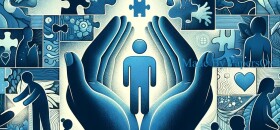How To Write an Essay About Autism
Understanding Autism
Before writing an essay about autism, it's essential to understand what autism is and the spectrum of conditions it encompasses. Autism, or Autism Spectrum Disorder (ASD), is a complex developmental disorder that affects communication and behavior. It is characterized by challenges with social skills, repetitive behaviors, speech, and nonverbal communication. Start your essay by explaining the nature of autism, its symptoms, and the spectrum concept, which acknowledges a range of strengths and challenges experienced by individuals with autism. It's also important to discuss the causes and diagnosis of autism, as well as the common misconceptions and stereotypes surrounding it. This foundational knowledge will set the stage for a more in-depth exploration of the topic.
Developing a Focused Thesis Statement
A strong essay on autism should be centered around a clear, focused thesis statement. This statement should present a specific angle or argument about autism. For example, you might discuss the importance of early intervention and therapy, the representation of autism in media, or the challenges faced by individuals with autism in education and employment. Your thesis will guide the direction of your essay and ensure that your analysis is structured and coherent.
Gathering and Analyzing Data
To support your thesis, gather relevant data and research from credible sources. This might include scientific studies, statistics, reports from autism advocacy organizations, and personal narratives. Analyze this data critically, considering different perspectives and the quality of the evidence. Including a range of viewpoints will strengthen your argument and demonstrate a comprehensive understanding of the topic.
Discussing Implications and Interventions
A significant portion of your essay should be dedicated to discussing the broader implications of autism and potential interventions. This can include the impact of autism on individuals and families, educational strategies, therapeutic approaches, and social support systems. Evaluate the effectiveness of these interventions, drawing on case studies or research findings. Discussing both the successes and challenges in managing and understanding autism will provide a balanced view and demonstrate a comprehensive understanding of the topic.
Concluding the Essay
Conclude your essay by summarizing the key points of your discussion and restating your thesis in light of the evidence and examples provided. Your conclusion should tie together your analysis and emphasize the significance of understanding and supporting individuals with autism. You might also want to highlight areas where further research or development is needed or the potential for societal changes to improve the lives of those with autism.
Final Review and Editing
After completing your essay, it's important to review and edit your work. Ensure that your arguments are clearly articulated and supported by evidence. Check for grammatical accuracy and ensure that your essay flows logically from one point to the next. Consider seeking feedback from peers or experts in the field to refine your essay further. A well-crafted essay on autism will not only inform but also engage readers in considering the complexities of this condition and the collective efforts required to support those affected by it.



